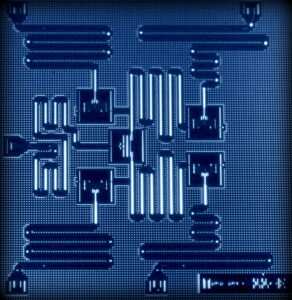Quantum computing is an incredible technology that contains huge possibilities for finding solutions. Adiabatic quantum computing (AQC) stands out as a distinct paradigm that offers a unique approach to solving complex computational problems. In this article, we will learn the intricacies of adiabatic quantum computing, uncovering its principles and applications.
What is Adiabatic Quantum Computing
To understand Adiabatic Quantum computing first we need to understand what is Adiabatic Processes in Quantum Mechanics:
At the core of adiabatic quantum computing is the concept of adiabatic processes in quantum mechanics. An adiabatic process is one in which a system evolves without gaining or losing heat – a gradual and controlled transformation of quantum states.
Let’s understand with an example:
Think of a quantum system, like an atom, as a tiny musical instrument. Now, imagine you want to change the pitch of the sound it produces without making any noise. Adiabatic processes are like smoothly tuning the instrument without causing any disturbance.
In daily life terms, it’s like adjusting the volume on your headphones without hearing any sudden jumps or glitches. Adiabatic processes in quantum mechanics involve making changes to a system so smoothly that it doesn’t lose or gain any energy, just like tuning your instrument without creating any unwanted noise.
How does adiabatic quantum computing work?
Adiabatic quantum computing works by initializing a quantum system in a known state and allowing it to evolve gradually under the influence of an adiabatic evolution from an initial Hamiltonian to a problem Hamiltonian. The objective is to find the ground state of the final Hamiltonian, which encodes the solution to a computational problem.
Quantum Hamiltonian Evolution:
In AQC, the quantum system evolves from an initial state described by a simple Hamiltonian to a final state governed by a problem Hamiltonian representing the computational problem at hand. The gradual transition ensures that the system remains in its ground state throughout.
Finding the Ground State:
The key objective in adiabatic quantum computing is to design a problem Hamiltonian in such a way that the ground state encodes the solution to the computational problem. The adiabatic theorem guarantees that, if the evolution is slow enough, the system remains in the ground state.

Adiabatic Quantum Computing Process
1. Initialization:
The quantum system starts in a known and manageable initial state, often chosen to be the ground state of a simple Hamiltonian.
2. Adiabatic Evolution:
The system is allowed to evolve slowly under the influence of the adiabatic evolution from the initial Hamiltonian to the problem Hamiltonian.
3. Measurement:
Once the evolution is complete, a measurement is performed to extract information about the final state, which ideally corresponds to the ground state of the problem Hamiltonian.
4. Problem Solution:
The measured state provides information about the solution to the computational problem encoded in the ground state of the final Hamiltonian.
Applications and Challenges
1. Optimization Problems:
Adiabatic quantum computing excels in solving optimization problems, including combinatorial optimization and constraint satisfaction problems. Its ability to find the ground state of a problem Hamiltonian makes it well-suited for optimization tasks.
2. Material Science and Chemistry:
AQC shows promise in simulating quantum systems, making it valuable for applications in material science and chemistry. Understanding complex molecular structures and interactions is a potential application.
3. Challenges in Implementations:
Implementing adiabatic quantum computing faces challenges such as maintaining quantum coherence during the adiabatic evolution and ensuring that the evolution is slow enough for the adiabatic theorem to hold.
Conclusion
Adiabatic quantum computing, with its unique approach to problem-solving through controlled quantum evolution, holds the promise of addressing complex computational challenges. While facing implementation hurdles, ongoing research and developments suggest that AQC could play a significant role in the future of quantum computation, contributing to advancements in optimization, simulation, and beyond.
Frequently Asked Questions (FAQs)
What are the applications of adiabatic quantum computing?
Ans- Adiabatic quantum computing is particularly suited for solving optimization problems, including combinatorial optimization and constraint satisfaction problems. It also shows promise in applications related to material science and chemistry, such as simulating quantum systems.
What is adiabatic computing in short?
Ans- Adiabatic computing is a type of quantum computing that involves solving complex problems by smoothly transitioning a quantum system between different states, without losing or gaining energy.
Also, learn
‘8 main Limitations of Quantum Computers’ [click here]
‘Quantum Internet: Navigating The Quantum Frontier’ [click here]
Learn from the internet [click here]

1 thought on “Adiabatic Quantum Computing (AQC): Navigating the Quantum Land”